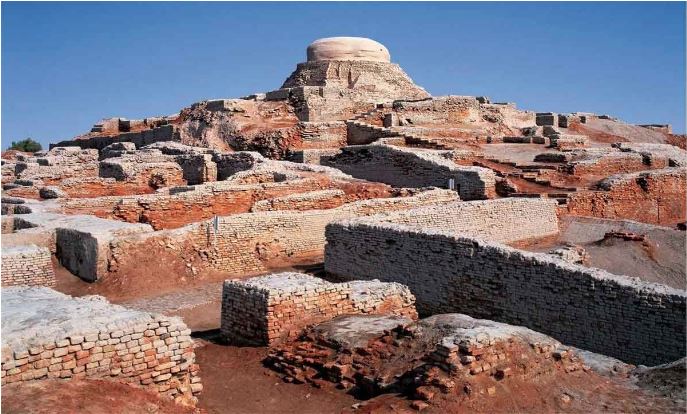Mohenjo-daro’s world heritage tag
Context
Recently, Pakistan's Department of Archaeology has said that Mohenjo-daro might be removed from the world heritage list, if urgent attention towards its conservation and restoration is not given.
About Mohenjo-daro
- Mohenjo-daro, a group of mounds and ruins, is a 5000-year-old archaeological site located about 80-km off the city of Sukkur.
- It comprises the remnants of one of two main centres of the ancient Indus Valley Civilisation, the other one being Harappa, located 640 km to the northwest, in Punjab province.
- Mohenjo-daro, which means ‘mound of the dead’, was one of the oldest cities of the world.
- Mohenjo-daro, known to be a model planned city of the ancient civilisation, the houses here had bathrooms, toilets and drainage system.
- The sheer size of the city, and its provision of public buildings and facilities, suggests a high level of social organization.
- Though in ruins, the walls and brick pavements in the streets are still in a preserved condition.
- The ruins of the city remained undocumented for around 3,700 years, until 1920, when archaeologist RD Banerji visited the site.
- Its excavation started in 1921 and continued in phases till 1964-65. The site went to Pakistan during Partition.
Other Indus Valley sites
- The Indus Valley Civilisation spanned much of what is now Pakistan and the northern states of India (Gujarat, Haryana and Rajasthan), even extending towards the Iranian border.
- Its major urban centres included Harappa and Mohenjo-daro in Pakistan, and Lothal, Kalibangan, Dholavira and Rakhigarhi in India.
- Mohenjo-daro is considered the most advanced city of its time, with sophisticated civil engineering and urban planning.
- When the Indus Valley Civilisation went into sudden decline around the 19th century BC, Mohenjo-Daro was abandoned.
Losing world heritage tag
- There are around 1,100 UNESCO listed sites across its 167 member countries.
- Last year, the World Heritage Committee, holding its 44th session in China, decided to delete the property ‘Liverpool – Maritime Mercantile City’ (UK) from the World Heritage List, due to “the irreversible loss of attributes conveying the outstanding universal value of the property,”.
- Liverpool was added to the World Heritage List in 2004 in recognition of its role as one of the world’s major trading centres in the 18th and 19th centuries – and its pioneering dock technology, transport systems and port management.


